4.0 MORALE, DISCIPLINE, AND COMMAND
1e
4.0 MORALE, DISCIPLINE, AND COMMAND
1e
| 4.1 Determining Base Morale | 4.2 Determining Current Morale | 4.3 How to Check Morale | 4.4 When to Check Morale | 4.5 Effect of Morale Check |
| 4.6 Discipline | - | - | - | - |
| 4.7 Definition of Command | 4.8 Command Radius | 4.9 Charisma | 4.10 Command Hierarchy | - |
| - | - | BATTLESYSTEM | - | - |
All units have a Morale Rating
that reflects the general
spirit and enthusiasm of the troops. Some units have
Commanders who can give orders and rally
troops.
Brigades and Armies have higher-ranking commanders.
The morale, intel
and AL of a unit
determine its discipline--its ability to follow
orders and
fight effectively.
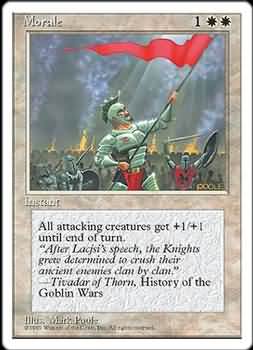
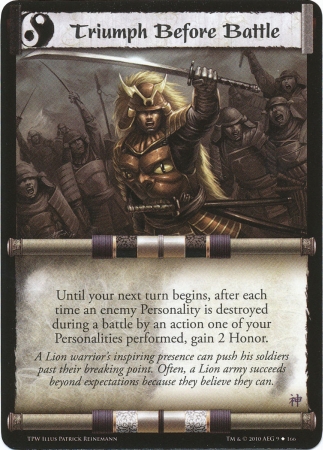
The Initial Morale for all units is 11.
Modify the initial morale based on Table 3, below,
to determine Base Morale
(ML) of each unit. Write the base morale
on the Army Roster Sheet. The Current
Morale of a unit can differ from base
morale during a battle based on
situational factors. You must keep track
of current morale at all times.
SPECIAL NOTE: Some unusual
monsters either never check morale, or
have special morale bonuses. These
should be carefully defined before the
battle begins, and the game effects listed.
Units that never check morale (e.g.,
berserkers, gibberlings)
cannot Rout.
However, you must calculate a morale
rating for them no matter what, since
there are situations not involving a
potential rout in which a Morale Check
may be required.
| D&D Game Morale. The morale
ratings given for monsters and men in the D&D game are calculated for role-playing adventures with small groups. They are not calculated for mass battles. Therefore, disregard the given morale rating for D&D game creatures and calculate their morale using the procedures given here. |
[4.2] DETERMING CURRENT MORALE
Current morale is determined during
play whenever the unit must check
morale. The situational factors listed in
Table 4 alter the base morale.
EXAMPLES: A unit of orcs with a Base Morale of 12 is commanded
by a
fighter w/ a CHA of 17, and is
marching in closed formation when a
fireball explodes, killing
30% of the unit.
Its Current Morale is 12 (base) + 1
(closed formation) +2 (commander CB)
-1 (figure removed by magic) = 14.
A unit of hill giants with a Base
Morale of 13 is attacked from the rear by
a unit of spectres, and over 50% of the
hill giant unit has already been lost. Its
Current Morale is 13 (base) -2 (over
50% casualties) -2 (attacked from the
rear) -3 (attacked by level drainers) = 6.
| Creatures have 1/2 HD or less | -2 |
| Creatures have more than 1/2 HD but less than 1 HD | -1 |
| Creatures have 4 to 8 + HD | +1 |
| Creatures have 9 to 14 + HD | +2 |
| Creatures have more than 14 + HD | +3 |
| Demihumans | +1 |
| Creatures with one or more Special Abilities* | +1 |
| Creatures with one or more Exceptional Abilities* | +1 |
| Unit has magic equipment | +1 |
| Unit has 6 or fewer figures | -2 |
| Unit has 7 to 11 figures | -1 |
| Unit AC 0 or better | +2 |
| Unit AC 1 to 4 | +1 |
| Unit AC 8 to 10 | -1 |
| Unit is mounted | +1 |
| Unit is Regular | +1 |
Table 4: Situational Morale Modifiers
| At least 50% of unit has been lost | -2 |
| At least 75% of unit has been lost | -4 |
| An enemy unit is in base-to-base contact with the rear of the unit | -2 |
| The unit is Out of Command (does not apply to skirmish units) | -2 |
| The Morale Check is because a figure was removed by magic | -1 |
| The Morale Check is because the unit commander was killed | -1 |
| The unit is in Open or Mob Formation,
Charged during the current Game Round, and failed to end its move in base-to-base contact with an enemy figure or figures |
-3 |
| The unit is in Closed Formation | +1 |
| The unit is a Mob and
a friendly regular infantry unit is directly behind it and no more than 6" away |
+2 |
| Any figure in the unit is in base-to-base contact with a creature that
drains levels,
or with a creature it cannot possibly hit (hit only by magic weapons, etc.) |
-3 |
| CB of current commander | (if any) |
When a Morale Check is required by
the rules, the player controlling the unit
that must check morale rolls 2d10. If the
result is equal to or less than the current
morale of the unit, the Morale Check is
successful; otherwise, the Morale Check
is failed.
A unit must make a Morale Check
whenever any of the conditions listed in
Table 5 occur. One attack that fulfills
two or more conditions requires only one
Morale Check.
EXAMPLE: A fireball
that pushes a
unit's casaulties over 50% requires only
one Morale Check even though it fulfills
two of the conditions for a Morale
Check. On the other hand, if one unit
attacks with a fireball and
another unit
fires a volley of missiles, causing total
casualties over 50%, the the unit makes
two Morale checks, since there were two
different attacks.
A unit may be required to make
several Morale Checks during a Game
Round. If conditions requiring a Morale
Check occur in several different phases,
the unit must check morale during each
phase in which one of the conditions
occurs.
EXAMPLE: During the Missile and
Magic Phase, a unit is hit with a fireball
that removes one figure (figure removed
by magic). During the Movement Phase,
pass-through fire pushes casualties over
50%. During the Melee Phase, the Unit
Commander is killed by an invisible
assassin (one Morale check) and at the
end of that phase the unit is in
base-to-base contact with undead
(another Morale Check). The unit must
make a total of 4 Morale Checks during
that Game Round.
Table 5: When to Check Morale
| - | Immediately after the unit has lost 25% of its original figures. |
| - | Immediately after the unit has lost 50% of its original figures. |
| - | Each time a figure is lost from a unit after that unit has lost 50% of its original figures |
| - | Each time a figure is removed from a unit by magic |
| - | The unit's commander is killed |
| - | The unit is in base-to-base contact with undead or level draining creatures at the end of a Melee Round |
| - | The unit is touching a creature it cannot harm (affected only by magical weapons, etc.) at the end of a Melee Phase |
| - | A figure is a member of a Skirmish unit, and any friendly unit or figure within its base ground movement rate Routs |
| - | Whenever other game or scenario rules require a Morale Check |
If a Morale Check for a unit succeeds,
no adverse effects occur.
If a unit in Closed Formation fails a
Morale Check, it immed. breaks
into Open Formation. The unit does not
actually MOVE, but the figures are
spread
apart. A unit cannot increase the #
of figures in its frontage under this rule,
but it can decrease the # of figures
in its frontage.
If a unit in Open, Skirmish, or Mob
Formation fails a Morale Check, it
Routs. A routing unit immed. moves
away from the enemy a total of its
movement rate plus an additional 1/3 of
its movement rate, and ends that MOVE
with its back to enemy. Routs ar e
also discussed under [7.15] ROUT and
[6.0] RALLY PHASE.
Q: When do heroes
check morale? If a
hero routs, who can rally
him?
A: Heroes do not check
morale using the
BATTLESYSTEM supplement
rules, and do
not rout. If an NPC hero
(or other single
figure) is faced with a
total disaster or
extreme peril, he may flee
or disobey
orders according to the
morale rules on
pages 36-37
and page 67 of the DMG. It is
best to have a neutral referee
decide when
NPC heroes check morale
or obedience.
(127.14)
Q: When a unit is
forced into open
order due to a failed morale
check,
does it pay a movement cost?
When
can it return to closed
order? What
happens if the unit is still
in melee?
What is the effect on a
unit that has
performed a wrap-around?
Since
wrap-around forces the unit
into
open order, wouldn?t the
unit rout
immediately?
A: The switch to open
order is automatic;
there is no movement. Melee
or wraparound
does not effect the change.
The
unit simply spreads out.
This has no effect
on the melee other than
to reduce the
number of figures in base-to-base
contact.
Units that perform wrap-arounds
are not
forced into open order until
after the
melee. If morale failure
forces them into
open order before that,
there is no effect.
(127.14)
Each unit has a Discipline (DL) rating
as well as a Morale rating. The Discipline
rating of a unit is calculated in the same
manner as the Base Morale rating of a
unit. In addition to the factors under
Base Morale, the special modifiers in
Table 6 apply to Discipline ratings.
Situational morale factors (Table 4) never
apply to Discipline ratings.
Table 6: Discipline Modifiers
| Unit has Low or lower intelligence | -1 |
| Unit has High or higher intelligence | +1 |
| Unit is of Chaotic alignment | -1 |
| Unit is of Lawful alignment | +1 |
Some units that never check morale
(notably berserkers) have a discipline
rating of 0. Whenever they encounter a
situation that requires a discipline check,
the check automatically fails. This should
be determined at the beginning of the
game.
A discipline check is made when any
of the following occur:
Table 7: When to Check Discipline
| - | The unit sees a "hated" opponent (PH, p. 18) <link> within its charge range at the beginning of its Movement Phase. |
| - | The unit is of chaotic alignment or low intelligence, and an enemy
makes a Fighting Withdrawal (see [7.12] FIGHTING
WITHDRAWAL) or
Flees (see [8.8] ENDING A MELEE) while engaged with the unit. |
| - | The unit is of chaotic alignment or low intelligence, and the unit is ordered to charge in Closed Formation. |
| - | The unit is a Mob or is made of berserker-type troops, and it sees any opponent within its charge range at the beginning of its Movement Phase. |
When a discipline check is failed, the
unit goes Out of Command and attacks
and/or charges the enemy regardless of
the desires of the commander. If the unit
was in Closed Formation, it goes
immed. to Open Formation. It
charges and/or attacks the enemy until
the unit is routed, the enemy unit is
routed, or the enemy unit is completely
defeated.
The commander of a unit cannot
reassert command until after the unit has
completed its attack. The commander
reasserts command in the same way he
Rallies a unit (see [6.0] RALLY PHASE).
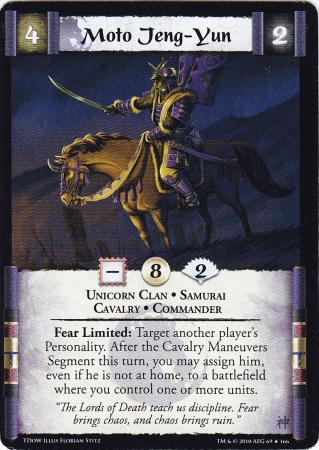
Commanders are an important part of
any army. All Regular units must have
Unit Commanders; mobs and skirmish
units sometimes have Unit Commanders.
Brigade and Army Commanders
command multiple units, and also
exercise sole command over mobs and
skirmish units that do not have Unit
Commanders.
A unit is In Command when all figures
are within the Command Radius (see
[4.8] COMMAND RADIUS) of the unit's
commander, and the unit has not failed a
discipline check or routed. A unit that is
not in command is Out of Command.
A regular unit must be in command to
go into Closed Formation, or to move
when it is in the Closed Formation. A regular
unit must be in command to perform a
Fighting Withdrawal or to go into a
special formation ([11.6], [11.7]).
A regular unit that is in command
receives combat and morale bonuses. A
regular or skirmish unit that is out of
command may still MOVE && FIGHT, but
does not receive these bonuses. A mob
always suffers Out of Command
penalties regardless of its command
status.
A commander may rally units that
have Routed (see [6.0] RALLY PHASE).
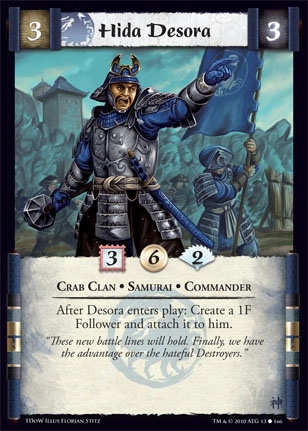
Every commander has a Command
Radius (abbreviated CR). The command
radius of a human or demi-human
commander is calculated by adding the
character's CHA to his level and
dividing by two. Fighters and their
sub-classes (rangers, paladins, etc.)
receive a 3" bonus to CR. The command
radius of a humanoid or monster
commander is equal to 2/3 of the
creature's movement rate.
LIMITATIONS: A commander must be
able to communicate with his troops.
Magical silence or darkness can take a
unit out of command even if its
commander is within his CR. There are
no absolute rules on who can command
what kind of unit, but beware of
AL problems, racial hatreds,
languages, and the like. Common sense is
recommended in choosing commanders.
Commanders with special powers
(telepathy, etc.) must have
their powers
defined in advance, either by the scenario
or by the referee. Think carefully before
allowing xceptions, and make sure
everything necessary to the scenario is
defined beforehand.

The CHA of a commander affects
the current morale of his troops. Use the
following table to determine the charisma
modifier of each commander:
Table 8: Charisma Bonus
| Commander Charisma | Morale Modifier |
| 19 + | +3 |
| 17-18 | +2 |
| 15-16 | +1 |
| 7-14 | 0 |
| 5-6 | -1 |
| 3-4 | -2 |
| 2- | -3 |
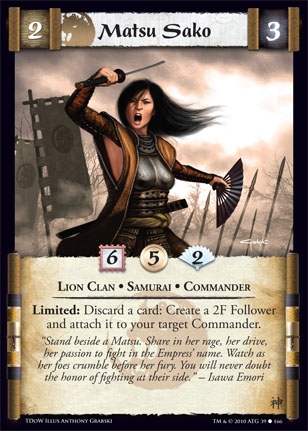
Some commanders have higher ranks
than other commanders.
Unit Commander: A Unit Commander commands
only his unit.
He cannot benefit the members of another unit.
Brigade Commander: A Brigade Commander
commands 4-8
units. He can take over a unit if a Unit
Commander is kiled, rally a routed unit
whether or not the Unit Commander is
still alive, or place figures in command
that are outside the command radius of
their Unit Commander. He can also Give
Orders to mobs. Brigade Commanders
are only used in battles that have more than
seven units on a side. There must be
two or more brigades of 4-8 units each in
order to have Brigade Commanders.
Army Commander: An Army Commander is the
highest-ranking officer on the field. Each
side may have no more than one Army
Commander. The Army Commander
may have Brigade Commanders if the
battle is large enough. Otherwise, the
Army Commander directly controls the
Unit Commanders. An Army
Commander can perform all the
functions of a Brigade Commander, but
can affect any unit in the entire army.
SPECIAL NOTE: Some scenarios
may give a specific command structure for a
battle. Some monsters (e.g. modrons)
have special command hierarchies. All
exceptions to normal command rules
must be worked out and agreed to by the
referee, or the players if there is no
referee, before the battle begins.
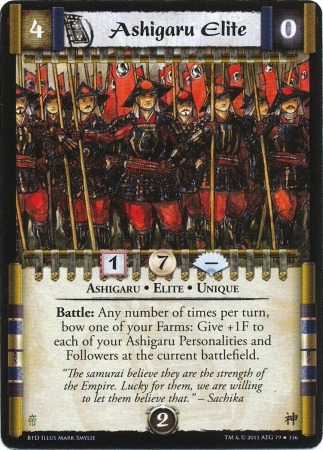
![]()
Reduce - Reuse - Recycle